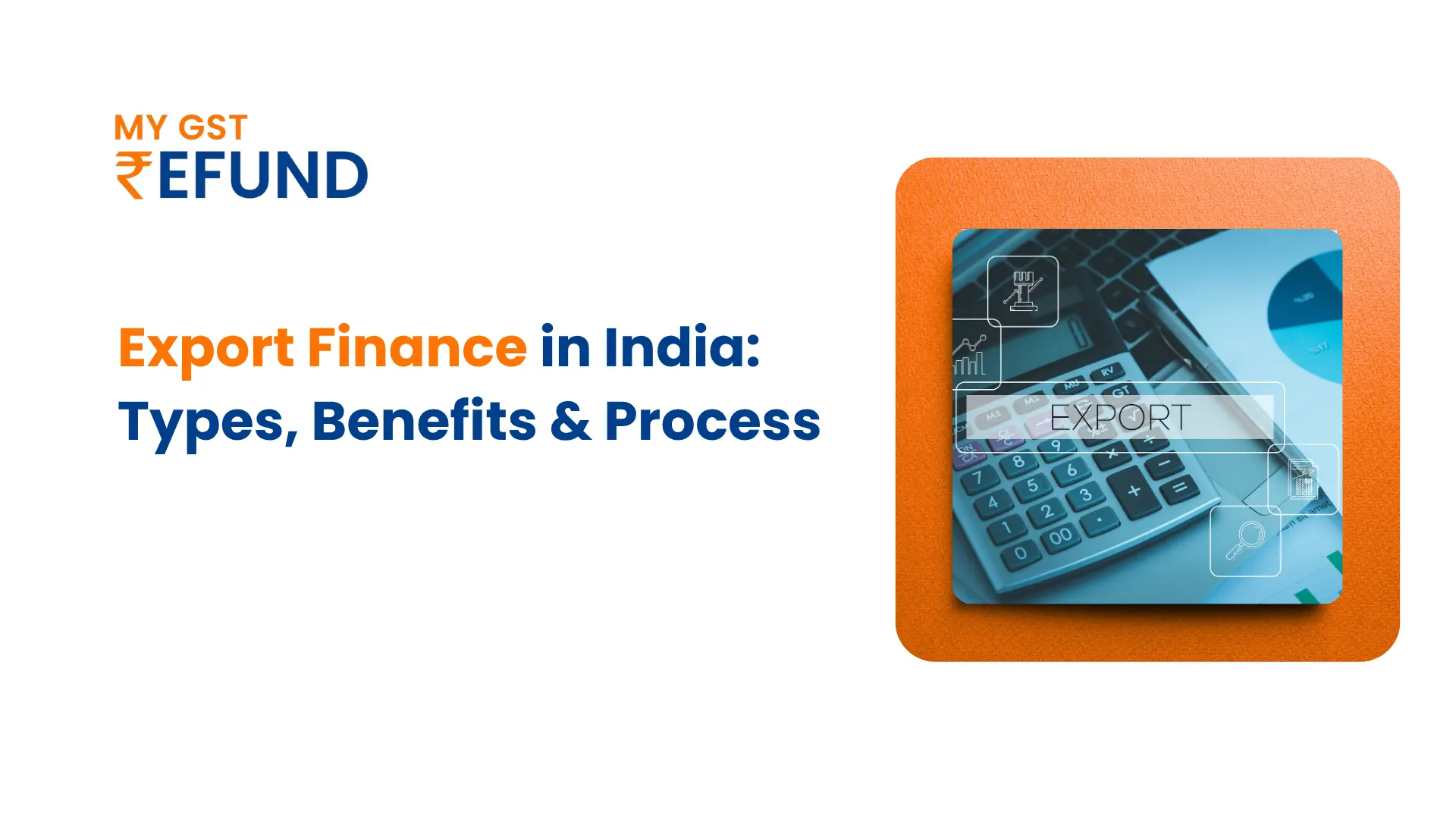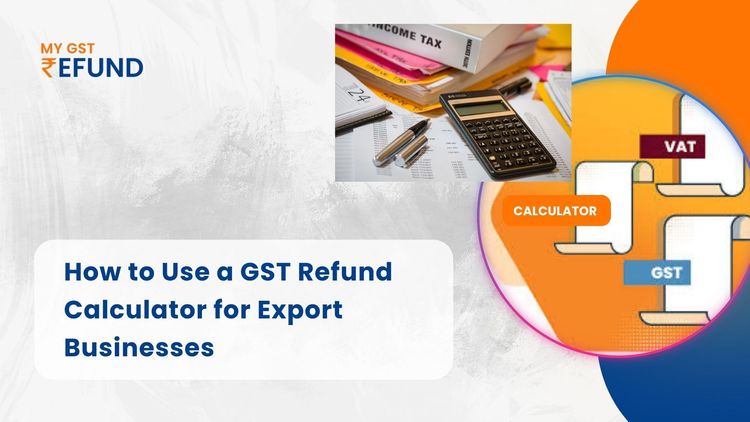Export Finance in India: Types, Benefits & Process Explained
The export business has a significant contribution towards the growth of the Indian economy, and the country is gaining international trade at a very fast rate. The exporters do not, however, take a trip through the rocky roads of cash flow, working capital, and production cost without walking easily. Here the Export Finance in India comes in as crucial. It is the economic lifeline, which maintains the continuity of business throughout the cycle of export and import.
So in today's blog, we are going to discover what export finance implies in the Indian context, and the types of export finance. Pre-Shipment Export Finance, Post-Shipment Export Finance, deferred export finance, its advantages, the mode of its utilisation, its disadvantages, and the government schemes.
What is Export Finance?
Export finance refers to a way through which exporters are guaranteed to engage in international trade by providing them with the necessary funds. Export finance is important when a business is exporting goods to a different country as it allows it the means to be able to produce and deliver the goods within a specified budget.
Types of Export Finance in India:
1. Pre-Shipment Export Finance
Pre-shipment export finance is a type of export finance that is given before the goods are shipped, as it assists exporters with labour, packaging, raw material procurement, and other manufacturing expenses.
This kind of financing, which is also known as "packing credit," is provided in accordance with verified export orders or letters of credit (LC).
2. Post-Shipment Export Finance
A post-shipment export finance is a type of finance that guarantees working capital until payment is received, to prevent liquidity problems.
Exporters still have to wait for the foreign buyer to clear the payment after the goods are shipped. banks and financial institutions offer solutions such as:
Bill Discounting: The exporter submits the bill of exchange to the bank, which then pays the exporter a discounted amount upfront. The bank later collects the full payment from the buyer.
Export Factoring: A financial service where a factoring company purchases the exporter’s receivables and pays them a large percentage of the invoice amount immediately. The factor then collects the payment from the overseas buyer.
3. Deferred Export Finance
Deferred export finance is a type of export finance that is applicable whereby the exporter ensures continuity of the cash flow, and at the same time, the payment is paid in instalments within a period of months/years.
In other export contracts, the payment terms have been set out to be made a long time after delivery.
4. Export Finance Against
Exporters can also obtain finance against specific export-related instruments or securities, such as:
Important attributes:
- Collection of bills on export: Export collection of bills
- Letters of credit
- Duty drawback privileges
- Standby Letters of Credit (SBLC)
This form of export finance against documents or guarantees is open and is applied frequently when the exporter does not require a usual loan but requires funds based on the existing debts.
Benefits of Export Finance for Indian Exporters:
Type of export Finance offers a wide range of benefits that directly contribute to an exporter’s operational efficiency and international competitiveness:
Easy Working Capital Management: Guarantees there will be access to cash at the right time without delays in production and delivery.
Risk Mitigation: Export finance facilities tend to include buyer default and political payment insurance.
Enhanced credibility: An opportunity to institutional finance increases credibility among foreign buyers and partners.
Quick Order Delivery: The finance department assists with delivering large orders without straining the finances.
Competitive Edge: Allows exporters to provide low-interest rates to foreign customers.
How to Avail Export Finance in India?
Availing export finance in India is a structured process, generally involving the following steps:
Export Order Confirmation: The Exporter gets a confirmed purchase order or LC from the foreign buyer.
Bank/Institution approach: Present a loan application at your bank or EXIM bank and attach export documents.
Documentation: Contain invoices, purchase orders, shipping details, IEC code, GST certificate, and bank KYC.
Loan Evaluation: The creditworthiness and risk are looked at by the financial institution.
Loan Disbursement: Pre-shipment or post-shipment finance is given and credited.
Repayment: Depending on the type of loans, the repayment is associated with the realization of shipping completion or banking accomplishment.
Many banks brought out export finance in India, catering to the needs of individual exporters, namely public banks, private banks, and export finance solutions providing agencies like the Export-Import Bank of India (EXIM Bank).
Challenges in Export Finance and How to Overcome Them?
Despite its significance, export finance in India exporters face several obstacles when attempting to secure export funding:
1. Extended Compliance and Documentation:
Traditionally, a lot of paperwork is involved in export finance: export orders, invoices, shipping bills, tax documents, bank verifications, and many others. Not only does this manual and repetitive documentation take time, but also there is a higher possibility of error and time wastage in the processing of a loan.
2. High Interest Rates:
The expenses of export finance are too high where interest rates are imposed by conventional banks, rendering it unaffordable to many exporters (MSMEs inclusive). This is why it becomes hard to be profitable and provide competitive pricing in the global market environment.
3. Foreign Exchange Risks:
In situations involving overseas buyers, exporters are usually unsafe to foreign currency when the shipment is placed, until payment is realised. There can be huge financial losses that can be caused by sudden currency devaluation.
4. Delayed Disbursement:
Export business that depends on time become victims when banks take too much time to process and disburse export finance. Such setbacks may affect the process of buying, making, and delivering, accordingly endangering customer relations.
Government Schemes Supporting Export Finance:
The Indian government provides various plans and policy structures to increase export finance in India
1. Interest Equalisation Scheme (IES)
The flagship scheme assists exporters to lower their borrowing cost as it gives them an interest credit of 3-5% on pre-shipment and post-shipment rupee export credit.
2. Export Credit Guarantee Corporation (ECGC)
ECGC offers exporters and banks credit insurance against the threat of payment default because of business or political reasons.
3.NIRYAT RIN VIKAS YOJANA (NIRVIK)
The scheme initiated by the Ministry of Commerce and Industry, NIRVIK, was aimed at providing an increased cover under credit insurance and easy disbursal of loans, especially to MSME exporters.
4. Priority Sector Lending (PSL)
Export credit is categorized under the Priority Sector Lending guidelines set by the RBI, where the latter has declared export credit as a priority area for banks. What this implies is that planned commercial banks are to reserve a fraction of their lending exclusively for exporters.
5. Export Promotion Capital Goods ( EPCG ) Scheme
A scheme under which an exporter is given the facility to import capital goods (machinery, equipment, etc) duty-free, when he/she satisfies some export performance conditions over a time span.
Apply Now for Export Finance Solutions!
Conclusion
Export finance in India is the spine of the export mechanism of India. Both large enterprise exporters or small-scale exporter, Type of export Finance comes in four as pre-shipment, post-shipment, deferred export finance, and export finance against documents, the knowledge of these types is important to the exporter to ease on the cash flow, timing of delivery of an order and maintaining competitiveness across the globe.
With India setting high export targets, the use of export finance instruments, digital ecosystems, and government schemes is not only advantageous but required as well.
Frequently Asked Questions
What are the documents required for export finance?
Some of the documentation needed is:
Confirmed export order/LC
Commercial invoice
Shipping bill/Bill of lading
IEC code
KYC and bank account information
Insurance and the packing list
What are the two stages of export finance?
Pre-Shipment Export Finance: It is provided before the shipment to complete the production.
Post-Shipment Export Finance: This will be given after shipment until it is paid.
What is the role of export finance?
Export finance makes available constant cash flow, reduces the risk of default payment, and increases the capability of exporters to accept and complete large overseas orders.
What is the difference between export finance and trade finance?
Although they both are applied in international trade, export finance directly addresses the exporter as it does not cover wider instruments that are applied in trade finance, such as import finance, bank guarantees, and letters of credit.
What is the export finance scheme?
It refers to a financial product offered by the government or by banks on behalf of exporters to help them financially through loans, advances, or credit insurance. So, the likes of the Interest Equalisation Scheme.
What are the sources of export financing?
Commercial banks
EXIM Bank
The financial institutions with the support of ECGC
Export finance platforms of Fintech and NBFC
Credit plans, Government credit schemes
What are the two types of exporters?
Merchant Exporters: These are people who sell products that they do not produce.
Manufacturer Exporters: These include exporters, who are the producers of the goods.
What is the EXIM policy?
The export-import (EXIM) policy in India, under the Foreign Trade Policy, offers regulations, incentives, and rules of compliance for international trade activities.
Related Posts








